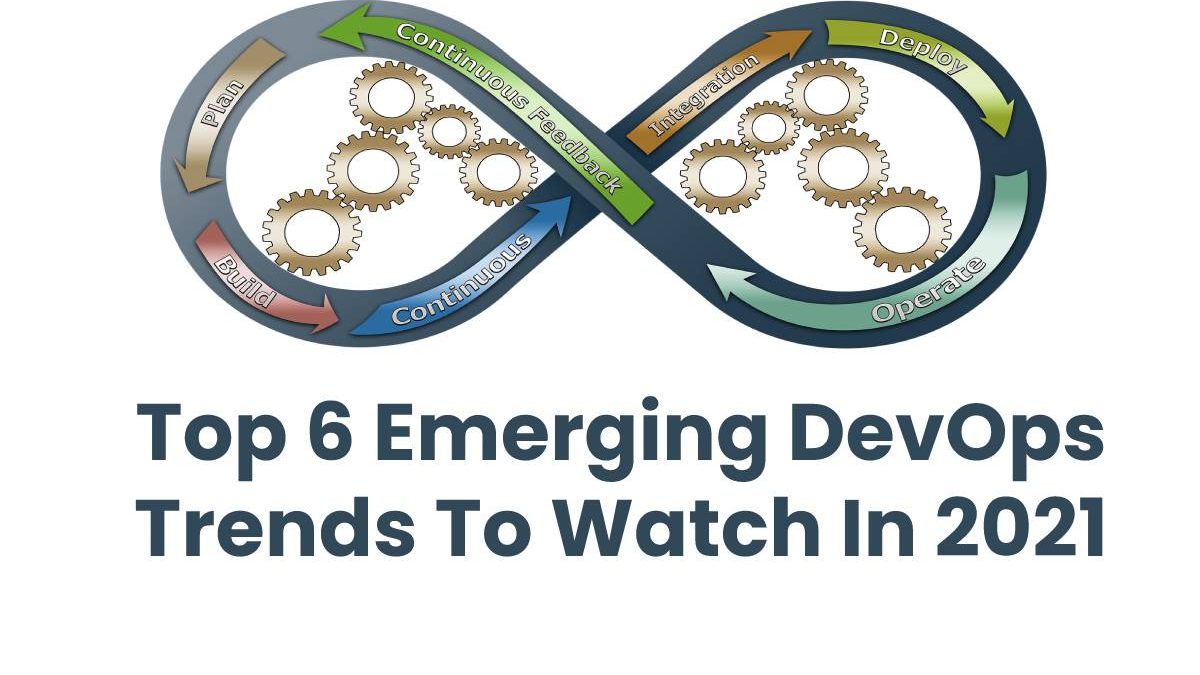There are several emerging DevOps trends to watch out for in 2021. According to recent studies, the DevOps market size is projected to reach over $10 billion by 2023. Undoubtedly, development enterprises are implementing DevOps methodologies, tools, and practices to increase efficiency in their pipelines. With an emphasis on rapid iteration, development, security and operations teams can work together in this approach to deliver high quality software quickly. As a DevOps enterprise manager, you need to know upcoming trends to look out for this year. This way, you adopt the latest technological innovations to compete in the expanding market. Read on to discover the top emerging DevOps trends to watch out for in 2021.
Table of Contents
Infrastructure Automation (IA) Tool Integrations
First, DevOps as a service expects to integrate more infrastructure automation (IA) tools this year. These innovative tools rely on artificial intelligence (AI) and machine learning (ML) to optimize your DevOps pipeline. Importantly, IA tools allow teams to design and automate delivery services in their on-premise and cloud environments. In addition, you can use these tools to streamline configuration and manage your IT infrastructure at the proper scale for your company.
Moreover, infrastructure automation tools typically support immutable and programmable infrastructures. Plus, you can also use these resources to simplify experimentation in your self-service and on-demand environments. Definitely, DevOps teams are integrating IA tools this year to streamline design and delivery automation. Moreover, infrastructure automation tools typically support immutable and programmable infrastructures built on a no code/low code platform.
Increased Container Registry Adoption
In addition, increased container registry adoption is another emerging DevOps trend to look out for in 2021. Many development companies are using containerization software to store container images, files, and other application components. For example, you can install a container registry manage and organize your Docker images or Helm charts. With easy integration into your build ecosystem, you can also use this container software for your Kubernetes deployments. In addition, container registries are highly scalable, supporting your future business model with hybrid, on-prem, and cloud environments. Increasingly, DevOps enterprises are adopting container registries to access reliable, efficient image management support.
DevOps Security
In a world where malware is growing at unprecedented rates, combating cybercrime starts with effective source code. DevSecOps, or DevOps security, is an integral part of modern DevOps methodologies. Proper DevSecOps tool training can help developers learn more about the core framework that integrates DevOps processes with best security practices, allowing them to address security throughout the development cycle, rather than taking a siloed approach to security. It consists of a set of practices, methods, technology, and software necessary to prevent mishaps. Ultimately, this can help drastically reduce security gaps and risks without negatively impacting development timelines.
Rise Of Predictive Analytics
Next, look for a rise of predictive data science analytics across DevOps pipelines in 2021. According to DevOps experts, teams need to spend more time and effort monitoring their business metrics, as opposed to their infrastructure. With predictive analytics, your DevOps team can improve quality, security, performance, and efficiency in your application deliveries.
For example, enterprises can use monitoring tools to aggregate logs from your IT systems. Then, they can use various tool features to identify inconsistencies, anomalies, and potential issues.
Additionally, many companies use time graphs as well to visualize patterns for normal system behavior. With monitoring tool advancements, many DevOps pipelines are leveraging predictive analytics to deliver higher quality software.
Hybrid Deployment Growth
Moreover, hybrid development growth is another growing trend to watch this year. Last year, COVID-19 accelerated remote work and cloud migration. Thus, DevOps shifted from a best practice to an influential business structure. In 2021, businesses will likely embrace hybrid workforces, combining remote work with on-site team collaboration. In addition, many business models will transition to hybrid structures as well.
For example, many business-to-business conferences will likely merge virtual scale with local networking approaches. In addition, hybrid will likely become a more popular deployment strategy as businesses modernize their tech stacks. Indeed, companies who embrace hybrid development are expected to see more success and increase productivity this year.
Edge Prioritization
Furthermore, many DevOps enterprises are prioritizing edge computing in 2021. Notably, edge computing is a distributed architecture. Indeed, it allows applications to react almost precisely where the data is created on the edge of the network. As organizations look to Internet of Things (IoT) technology and business transformation apps, many companies are prioritizing edge computing.
Importantly, this transition requires revised infrastructure. Software engineers need to push data and application resources towards edge locations to provide quicker response times. Of course, edge computing also offers increased flexibility and promotes more reliable scaling. Thus, many enterprises are prioritizing edge computing to build more innovative applications.
There are several emerging DevOps trends to watch out for in 2021. First, infrastructure automation integration is increasing as companies look to increase efficiency. Next, look out for a rise in predictive analytics with advanced monitoring tools. In addition, container registry adoption is increasing as more developers deploy on Kubernetes.
Moreover, hybrid deployments are also expected to grow this year. Furthermore, edge prioritization is increasing as DevOps engineers look to develop IoT applications. Watch out for these emerging DevOps trends in 2021.

